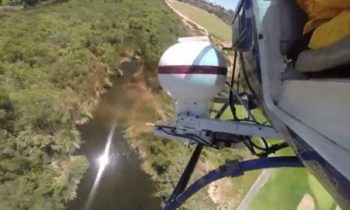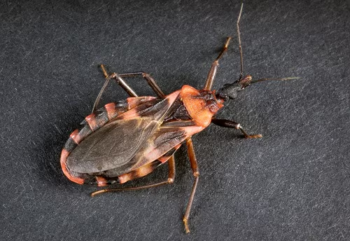Two weeks after the County announced its first human case of West Nile virus in nearly three years, the National Centers for Disease Control and Prevention said Wednesday that 2012 has been one of the worst years ever for the potentially-deadly disease.
The CDC announcement was a reminder that local residents should still protect themselves from mosquitoes that can carry West Nile virus — even though San Diego County hasn’t had a serious case of the disease in years, thanks in part to aggressive County mosquito-control and West Nile awareness campaigns.
This year’s outbreak is the largest seen in the U.S., through this point in August, since West Nile virus was first detected in this country in 1999. The CDC said that as of Aug. 21, 38 states had reported human cases and 41 people had died, including 21 people in Texas alone.
Two weeks ago, a 19-year-old Escondido man was diagnosed as the first human case in San Diego County since November 2009. However, the man did not become ill. He was diagnosed after donating blood.
West Nile virus was first detected in San Diego County in 2003. The disease mainly affects birds, but can be transmitted to people, horses and other animals by mosquitoes that first feed on infected birds.
Not all mosquitoes carry West Nile virus, and most people never get sick even if they are exposed to the disease.
Even though the potential of getting seriously ill is low, San Diego County Public Health Officer Dr. Wilma Wooten urged local residents to protect themselves from mosquitoes.
“West Nile virus can be a dangerous and potentially deadly disease,” Wooten said.
About one in five people can develop flu-like symptoms and about 1 percent can become seriously ill, including fatal swelling of the brain.
Even before the disease was first detected here, the County’s Department of Environmental Health annually conducted widespread campaigns to control mosquito populations. Since 2003 it has also conducted educational campaigns to teach people how to avoid exposure to West Nile virus.
The County uses helicopters and back-pack devices to drop and spread granular, cereal-like larvicide on local waterways, which are selected by monitoring where mosquitoes have been trapped in the past. The larvicide actually kills mosquito larvae – before they become adult mosquitoes that can spread the disease. The larvicide doesn’t hurt pets or people. The County has also given out free mosquito-eating fish, created Internet and text notifications, informational material, and visited schools with West Nile virus posters and brochures.
Environmental Health Director Jack Miller said there were very simple steps people could take to protect themselves.
“All they have to do,” Miller said, “is remember our ‘Prevent, Protect, Report,’ guidelines.”
- Prevent Mosquito Breeding: Dump out or remove any backyard item that can hold water, such as plant saucers, rain gutters, buckets, garbage cans, toys, old tires and wheelbarrows. Mosquito fish may be used to control mosquito breeding in backyard water sources such as unused swimming pools, ponds, fountains and horse troughs.
- Protect Yourself from Mosquito Bites: Protect yourself from the virus by staying inside when mosquitoes are most active, between dusk and dawn. Wear long sleeves and pants when outdoors. Use insect repellent containing DEET, picaridin, oil of eucalyptus or IR3535 when outside. Make sure screens on windows and doors are in good condition and secured.
- Report Dead Birds and Green Swimming Pools: Please report dead crows, ravens, jays, hawks and owls, and green pools to the Vector Control Program.
The public can sign up to receive text messages to get the latest county West Nile virus updates via their cellular telephones by texting the word PEST to the number 75309 on their cell phones. For more information about West Nile virus, go to San Diego County’s “Fight the Bite” website.




